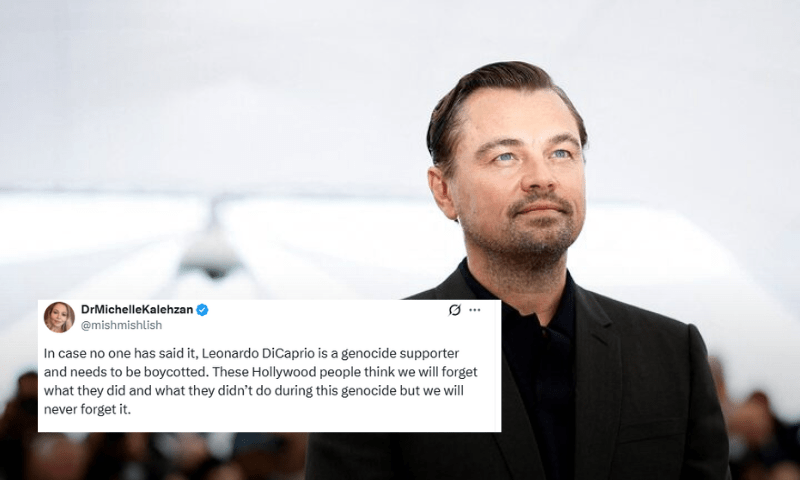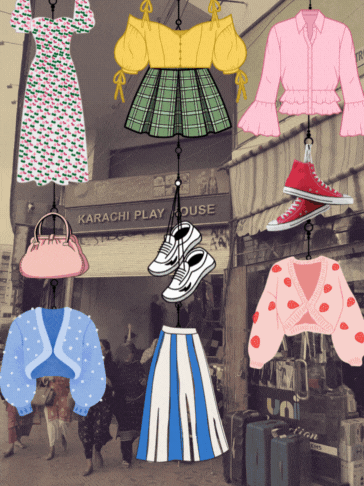People in the art world had problems acknowledging me: Sanki King
Most of us are fairly used to seeing graffiti outdoors or in public places. Even if it’s mostly not in its finest form, tastelessly adorning city walls with politics and hate, we understand that that’s where it belongs. The latest show at Sanat Initiative, however, proves otherwise. It invites graffiti into the gallery space, not only allowing us to view it in a completely different light (quite literally), but also acting as a gesture of acceptance officially welcoming graffiti into the realm of fine art in Pakistan.

“You Should Know Him by Now”, Abdullah Ahmed Khan, a.k.a Sanki King’s first solo exhibition, opened on June 4 at the Sanat Initiative. The show featured both average-sized canvases and a massive wall completely drowned in Sanki’s signature wild style, along with a one-hour live graffiti painting session on an outside wall of the gallery, where visitors and passersby were able to witness the graffiti being built layer by layer.
Graffiti being a form of street art with themes of vandalism, thrill, adventure, and illegality defining it, is a raw form of self-expression, and its birth and existence on the streets is what gives it most of its charm. So seeing a graffiti artist display works in a gallery begs the question:
How does a gallery space affect graffiti’s charm, and does it really belong there in the first place?
Well, for one, the anti-establishment nature of graffiti is mostly a thing of the past, and while most graffiti artists are still big on anarchist statements, in essence graffiti is no longer just about vandalism or illegality. In places like Pakistan where law is hardly understood or implemented, these qualities don’t even apply.
They have, however, helped romanticize the art form for both the youth and the fine art world, As a result, galleries have been showing graffiti art as early as the ‘70s and ‘80s when artists like Keith Haring and Jean-Michel Basquiat were first exhibited.

Secondly, the boundaries of art have become fluid, and the word ‘art’ itself is constantly being redefined. Art is whatever pleases the eye and speaks to you, it is a form of self expression, a means to subvert social norms and give voice to important issues. It does not have to fit into a neat little box; it is an idea and ideas are boundless. The medium and surface chosen to express these ideas can be anything at all.
Plus, artists today are working in various different mediums, and whatever helps your thoughts see the light of day in the best possible way, works. While Sanki is usually seen spraying large pieces of wall, he also has his own line of graffiti sneakers.

The works he has displayed in this show are dark and intricate canvas paintings, which turn words into images through a unique hieroglyphs-like script invented by the artist. Other pieces feature Caligraffiti, bringing in cultural influences from Pakistan and the Arab world, where Sanki was born and spent part of his childhood. Sanki’s unique style combines ancient sensibilities with contemporary techniques and contextualises graffiti in a south Asian cultural framework.
Of commercialisation and selling out
However, there are still many traditionalists in the graffiti art world who feel the shift to galleries is commercialising graffiti. During my conversation with him, I questioned Sanki about this, to which he responded “...and what is wrong with commercialisation? Look if you are commercialising the right artists, the right people, then it’s superb.“
As long as it does not change the art or the artist, it’s a non-issue, he believes.
Yet, a lot of big graffiti artists are being criticized by fans for “selling out”, or institutionalizing art. While it is true that graffiti is a kind of public or street art that engages a much wider audience, Sanki states that in its simplest form graffiti is any writing, scribbling, text or drawing that appears on a wall. It does not necessarily have to be out on the streets.
He also feels that these artists deserve to demand high prices and be recognized for their art.

Sanki believes that all art is public art, the kind in the gallery just has a different kind of public experiencing it. Bringing graffiti into the gallery doesn’t confine it, but actually gives it an additional outlet. This idea comes across beautifully in the piece “Solitude” which features one large wall of the gallery covered in graffiti. Within the caligraffiti and wildstyle strokes you see five camouflaged canvases.
The piece not only shows us the untamable nature of graffiti spreading beyond the canvas, but also highlights an intrinsic difference between graffiti and fine art “..once the mural is completed, the wall will be whitewashed but the canvases will be taken away. Now that makes these canvases more unique and more exclusive,” says Sanki.
Graffiti is raw, temporary, fleeting, which can add to its allure. But when you put it on a canvas it becomes enduring. Art lovers are able to own it and put it in their homes, which has a different kind of appeal.
Wall vs canvas
When it comes to technique and process, the canvases are dramatically different from the graffiti. Sanki tells me how he finds it extremely challenging moving from his sketchbook to a 60 ft. long wall, and then back to the tiny sketchbook which now resembles a matchbox in comparison. The large size brings the artist to life, and the gestures and hand movements are freer as well.

But when it comes to content it is probably the canvases that are able to articulate complex ideas more successfully. The graffiti pieces are aesthetically pleasing and visually dominant, but their messages are simple and sublime, of love, peace and patriotism, or maybe political commentary in certain cases. These are for public display after all. The canvases are more personal, and highlight certain thoughts and feelings on a darkened surface.
The gallery and graffiti: what’s the equation?
The biggest service the gallery performs for graffiti art and artists is through its power to legitimize. While you may walk right by a painted wall on the street, the same piece in a gallery will demand attention. The gallery certainly adds value.

Sanki himself shares how he had a rough time getting people to take him seriously. ”I don’t really like how certain lobbies only promote certain people who are not really qualified to be at that level. And I have been working so hard for so long, but most of the people who run the art world, they had a really big problem in acknowledging me because, first, I’m very young, and secondly, I’m not formally trained.”
This is actually why he gave the show its name, a message to those people saying “it’s about time I was recognized”.
So showing in a gallery has a lot to do with gaining that stamp of approval, or that recognition for an artist, more than it is about commerce. Sanki says that he never wanted to become an artist for the money or the success. “My goal was always to become a better artist and improve my work, and also become an example and a role model for guys like me who are young right now, in their teens..”

So artistic intention plays a significant role here as well. Graffiti is but a mode of expression, and it conveys its message whether it is in the gallery or out on the streets. That being said, in Pakistan Sanki is probably the only serious graffiti artist as of now, and in a place where graffiti and street art is needed to beautify the city and wake up a generation, it is important not to confine it to the gallery.
But as the live graffiti outside the gallery demonstrates, graffiti will still remain in the public eye, and as long as Sanki continues his large scale graffiti in the streets and public places, along with his artistic practice, graffiti as an art form will not suffer.
‘You should know him by now’ runs at the Sanat Gallery till June 18.












